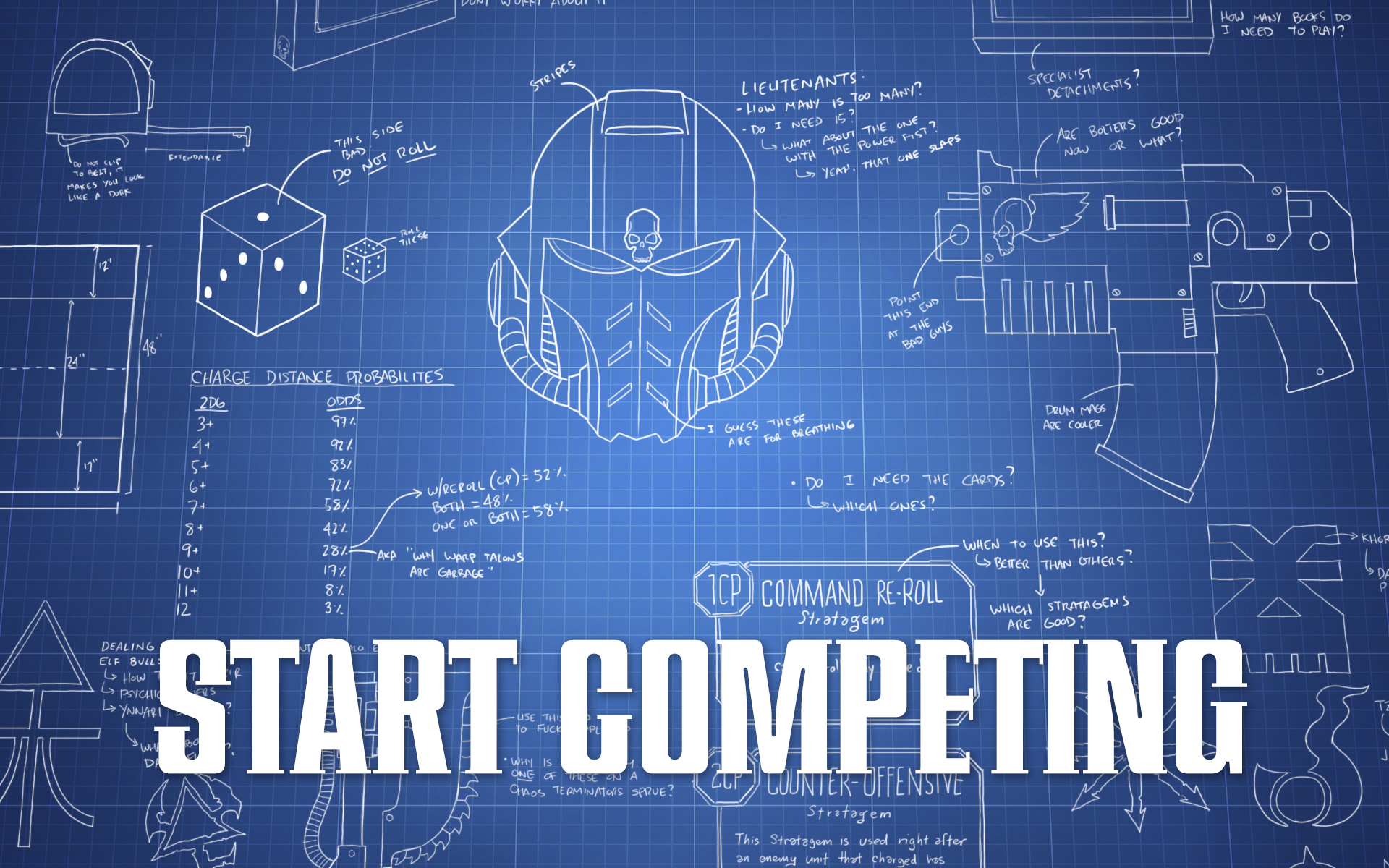Towards the end of 8th Edition I started drawing together some higher level strategy articles about how to evaluate armies – both your own and your opponent’s – on the table. These represented an attempt to try and draw together two years experience of playing competitive 40K into something that went a bit beyond the normal army-by-army rundowns, aiming to cut through to not just what worked in lists and on the table but why. 40K has far too many different options and possible situations to try and provide specific advice covering all of them, and we wanted to expand our library of strategic resources with content that would teach players principles they could apply to any situation or army list, as having a mental toolset that lets you really understand the game is crucial to consistently breaking through to the higher tables.
You can find the original articles via the links below:
- Start Competing: How to Assess an Opponent’s Army
- Assessing Army Lists – Part 2 – Real Battlefield Roles
- Start Competing 40k: Assessing New Options
Now, obviously, after I’d written two of the three parts of that initial series, 9th Edition got announced, which rather derailed things. We couldn’t be sure off the bat how much the new edition would change things, but other than knocking out a third part about evaluating new options (because, you know, topical) we put that particular content push on hold and settled in to wait and see what changes 9th would bring.
Quite a lot, it turns out! While we’re still playing with (largely) the same set of units, and the 9th core rules are a recognisable evolution of 8th rather than a complete re-write, enough has changed to substantially shake up the principles underlying list construction and what matters on the tabletop, making those articles a bit out of date. While competitive play has been running at a substantially reduced rate thanks to COVID, enough events have fired and I’ve got enough games under my belt that I’ve got at least some initial opinions about the way things have shifted. Not enough that I yet feel ready to write this kind of deep stuff from scratch, but enough to spot some of the ways in which they haven’t aged well (RIP article relevance, 2020-2020).
Unit Roles – How They’re Changing
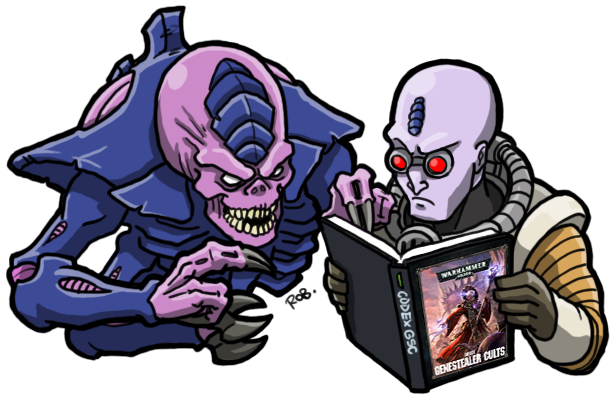
Perhaps unsurprisingly, the article out of the three that’s now most out-of-date is the one about the roles units play on the table. Changes to army construction, the missions, terrain and a whole host of other factors in the new edition means that what you want out of your units and how they play on the table have changed a lot. When building lists, I am consciously prioritising different things when selecting units, considering some options that I’d have never looked at in 8th, and discarding some old favourites out of hand. Put in terms of the article, my emerging belief is that several of the roles are redundant, at least two new specific capabilities are important enough that they should be roles in their own right, and within the still-relevant existing roles the factors that a unit good at them have changed.
My current expectation is that, come Christmas, we’ll be in a position to put together completely revamped 9th Edition versions of these articles. I should have managed to play at least a few six-round events by then, and we’ll have access to at least the first two 9th Edition Codexes, which might give us a steer on how GW are expecting army design to change. With the considerable power of the Goonhammer competitive brain trust to draw upon, that’ll be enough to get the full pieces written and ready to help our readers launch into events in the new year.
That’s still in the future though, and plenty of people are building lists and playing games right now. While I don’t think we’re ready to confidently commit to a new set of roles, we do have enough of a read on the new edition to take a fresh look at our existing ones, so that’s what we’re going to do today. The original article identified the following unit roles in 8th edition:
- Push Threat: Short ranged, durable threats that can attack enemy positions.
- Ranged Threat: Units that can deal meaningful damage at range.
- Reactive Threat: Units that can deal disproportionate damage in specific circumstances, usually counterattacking.
- Force Multipliers: Units that help other units perform dramatically more effectively.
- Board Control: Units that give your army the ability to occupy or threaten large parts of the board moderately durably.
- Tarpit: Units that can occupy small parts of the board extremely durably.
- Screening: Units that provide cost-efficient bodies to protect your other units.
- Backfield: Units that you are happy to use to fill space in your deployment zone and hold home objectives.
- ObSec: Unit with the Objective Secured ability.
- Harassment: Units that can threaten enemy weak points.
- Slot Fillers: Units that fill out detachments and unlock other units or CP.
- Counters: Units that help counteract specific strategies.
For each of these, we’re going to ask the following:
- Is this role more or less important in 9th Edition?
- What makes a unit better or worse at this role now?
- What are some examples of units that have gone up and down in value because of that?
Let’s go!
The Roles
Push Threat
A unit with sufficient mobility and (usually short-ranged) offensive power to launch meaningful attacks on parts of the board where the opponent’s forces are strong.
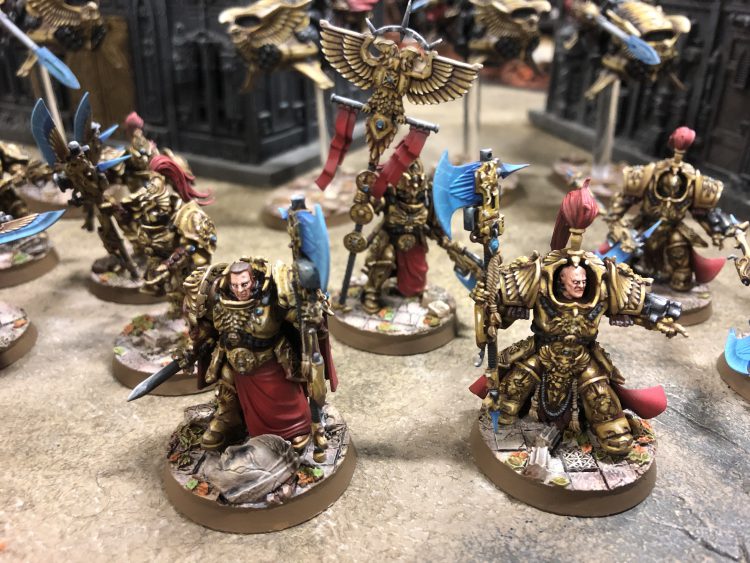
How Important are they in 9th?
Push threats are more important in 9th Edition, but there are steeper demands for a unit to be good at the role.
What Makes a Good Push Threat in 9th?
9th Edition’s missions are heavily focused on taking and holding objectives for scoring, and that means good Push Threats, units able to attack a position held by the opponent and take it, are theoretically extremely valuable. However, in order for them to meaningfully do more in this regard than a well tuned Reactive Threat, they need to be durable enough to remain on an objective you’ve taken until your next turn, as that’s the point at which they’ll actively score you points rather than just denying them to your opponent.
So far so good. However, changes to 9th Edition’s core rules, specifically the addition of the Desperate Breakout stratagem along with changes to coherency and charge rules mean that a whole class of units that used to fill this role aren’t nearly as good at it any more. Large melee units that relied “wrapping and trapping” enemy forces to prevent themselves getting shot to pieces can’t operate in this fashion any more, disqualifying several popular 8th edition choices from the role. In addition, high body count units are vulnerable to Blast weapons, inherently tanking their durability against lots of armies. Some armies can field horde push threats (Ork Boyz still seem to be doing OK) but generally only the ones with extremely cost-efficient models.
Instead, the best push threats in 9th tend to fall into two categories:
- Units that can also fill the Tarpit role for at least one turn, usually via access to special abilities.
- Multiple units of cost efficient, deadly killers with reasonable durability working together.
If you have units that can pull this off while still having options to get to objectives in the first place, you’re in a good spot, and such units are premium choices in the edition. If you don’t, you might need to find a different direction to take your army.
Examples
Improved Options
I’ve identified two flavours of push threat that are strong in 9th, and it’s worth taking an example of each.
For the Tarpit flavour, Allarus Custodians are a great choice. They have a couple of different options to help them get to objectives (Solar Watch speed boosts or Dread Host deep strike charge boosts), are murderous enough to wipe near anything they find there, and have a truly outrageous array of defensive options, headed up by The Emperor’s Auspice, to keep them in position as long as you have CP to burn.
For the small, efficient killer option, Bladeguard are pretty much the poster children. Yes, I know they’re new, but they’re emblematic of what we’re talking about, shut up. Yeeting them out of an Impulsor into mid-board cover gets them into position to do some real work from turn 2, and they have that perfect mix of being hideous blenders and disproportionately tough for their cost that makes them excellent once they arrive.
Weaker Options
The Possessed Bomb, weird be-tentacled boogeyman of most of the last six months of 8th, gets absolutely rocked by the various changes in 9th Edition. Obviously the fact they lose their specialist detachment is specific to them, but pretty much all the core changes crash into them too. They relied heavily on wraps to stay alive, they wanted to daisy chain their models way back to pick up a variety of auras, and the lists that ran them tended to be using them, once they were in a wrap position, to screen a large number of characters. Smaller units might find the odd bit of play somewhere, but the lists centred around them as a key push threat seem to be entirely dead.
Ranged Threat
A unit capable of inflicting meaningful damage on the enemy’s forces at medium or longer range.
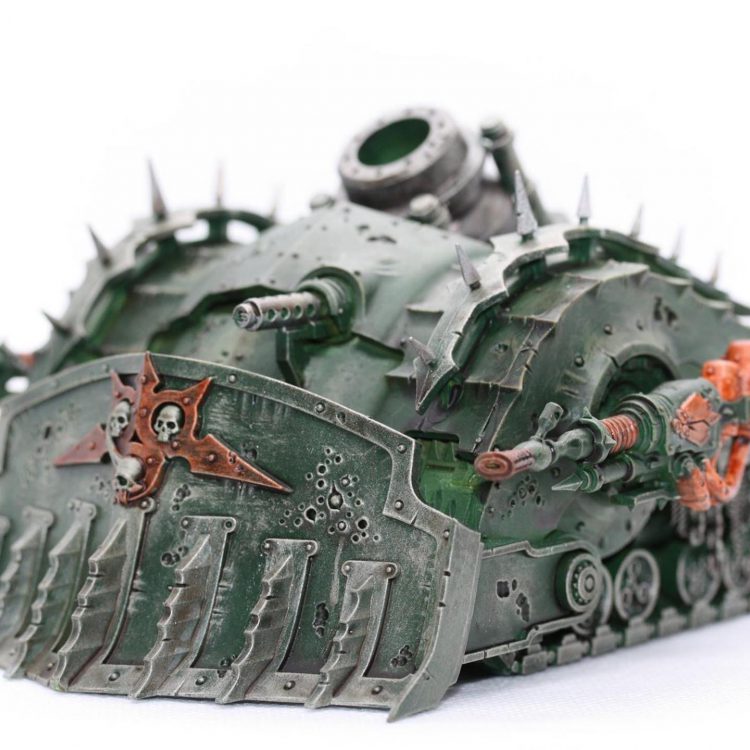
How Important are they in 9th?
Time for the first hot take – ranged threats seem to be slightly less important overall in 9th, and you generally want them to be able to flex to a second role.
What Makes a Good Ranged Threat in 9th?
So, what happened to all the complaining about shooting being overpowered in 9th? Well, would it shock you to know the internet peanut gallery maybe hadn’t figured out the full picture before going On One about how melee was dead and it was going to be gunlines all the way down? I realise that sounds unlikely, but let’s roll with it.
Shooting stuff is, obviously, still good. Neutralising your opponent’s key assets at a distance makes everything else a lot easier, and many armies will still want to incorporate some dedicated Ranged Threats in their lists. What’s changed is that you can’t so easily build an army around Ranged Threats alone any more. With the 9th missions not giving you primary points just for killing stuff any more, and Obscuring* terrain allowing a wider variety of enemy units to hide from you, you can’t afford to dedicate as much of your army to units whose only role is winning a gunfight.
Now, obviously, you’ll still see plenty of lists where shooting is their primary means of depleting their opponent’s forces, but the kind of Ranged Threats you’re seeing used in large numbers has changed a bit. By and large, those being favoured tend to either:
- Be tough and/or mobile, allowing them to fill the Backfield or Board Control role at the same time.
- Ignore line of sight, allowing them to take advantage of Obscuring terrain rather than being hindered by it. Many of the “pure” ranged threats still seeing use fit this bill.
- Blur the line into being closer to Reactive Threats.
If we step back and think about it, the reduced value of ranged threats makes sense. The whole idea behind the role system was to try and break down the ways a unit could contribute to a game-winning plan. Shooting stuff to death, by itself, only wins games of 9th Edition when you’re playing on planet bowling ball, so requiring Ranged Threats to do more in other areas of the game makes a lot of sense, and is one of the most important things to bear in mind when building lists.
*Probably worth explaining my thinking here. My experience thus far is that compared to the old first floor LOS-blocking rule, Obscuring reduces the number of places you can hide small units (as once they’re on the terrain they are no longer shielded by the rule) but increases the practicality of hiding tanks and other medium-large models under 18W on a lot of tables.
Examples
Improved Options
We’ll leave the Reactive Threat-style choices to one side for a moment, meaning we once again have two categories to find examples of.
For the tough/mobile option, the 9th Edition poster child has to be the Plagueburst Crawler. Now able to access a 4++ from the Ironclot Furnace and set up some powerful attrition shooting against enemy vehicles with Accelerated Entropy they exactly the kind of unit you want – they’ll gradually remove your opponent’s key assets while being tough enough themselves that trying to shoot them off the able will often fatally distract the enemy from removing your board control elements, leaving you in a win-win situation. While they’re cling on to their festering lives, they can be sitting on a home objective or pushing onto a midfield one behind the front wave of your army, helping contribute to your primary scores.
In terms of units that are still succeeding as “pure” Ranged Threats, the poster child has to be the Whirlwind Scorpius. Small enough to trivially hide behind Obscuring terrain while still unleashing its hellish payload on whatever it likes, its perfect for a “pure” example of this role in 9th. A major part of that is that because it’s probably undercosted for its damage output (I’ve had these described to me as “the shooting of three Whirlwinds for the price of two but with the resilience of one”), including one or two of them gives an army access to ranged threat capability without having to commit too large a proportion of your points to it – allowing you to use other units to build your objective game plan.
Weaker Options
To my mind a great example of the shift in priorities here is the Astra Militarum Tank Commander. These certainly aren’t bad now, but their old schtick of just being an extremely efficient gun platform that could help you gain the upper hand in a shooting war just isn’t as appealing any more. Like Possessed, they’re suffering at the same time from losing access to a powerful Specialist Detachment, but the fact remains that in 8th you could chuck many configurations of a TC into a list and expect them to be fine, where now you want a much clearer plan for how you’re going to get the most use from them.
Reactive Threat
A unit capable of doing disproportionate damage when used in specific situations, such as counter-charging into a push threat or when a highly suitable target is available.
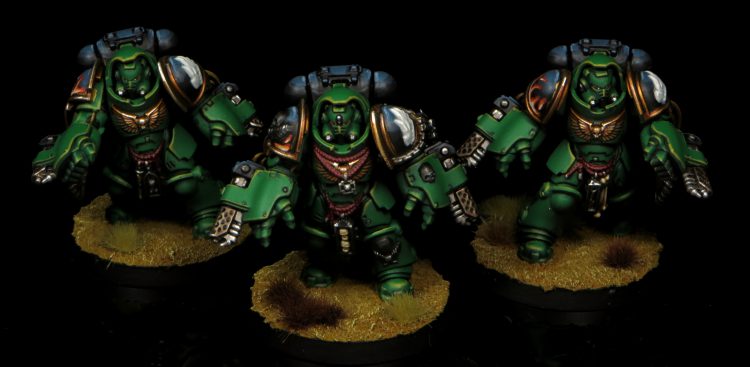
How Important are they in 9th?
Reactive threats are much more relevant in 9th Edition (with the caveat that a few types get weaker).
What Makes a Good Reactive Threat in 9th?
A lot of factors in 9th edition combine to make it the perfect playground for Reactive Threats. Smaller boards make it easier to get them where they need to be to do their job. Start of turn scoring means they have lots of windows to mess with your opponent’s plans. Shorter games means that having a threat go out in a blaze of glory to achieve a goal doesn’t carry as much risk of ending up with you running out of resources. Finally, Tactical Reserves means that a much, much wider variety of units suddenly has an angle on playing this role, as anything can deep strike.
My read on the 9th Edition mission design is that the goal is to reward smart trading of resources and positions to eke out a points advantage, and in that environment these obviously thrive. Amongst them, the characteristics that stand out among the very best ones are:
- The ability to engage a broad range of targets, making them adaptable to more situations.
- Having melee punch and reliable charges out of deep strike as part of their function, meaning they end up on an objective once they’ve done their job, allowing them to start scoring promptly if you’re removed your opponent’s ability to deal with them.
- Being able to do their thing from turn 1 without being vulnerable during setup, allowing you to swing control of the game if you go second.
At the same time as these generally get a bit better, there is a category that was popular in 8th which gets somewhat weaker, which is melee character threats. The triple whammy of HQ slots being harder to come by, it being harder to screen them and multi-charging being more challenging to pull off with single-model units makes them a bit less potent than they were. Not bad, and still worthy of a place in many lists, but more of a sometimes treat.
Examples
Improved Options
A good example of how 9th is enabling totally new options is the use of Flamestorm Aggressors in this role in Salamander Successors. Thanks to being able to Tactical Reserve them then drop them in for some nightmarish, strat-buffed flamer action on demand, they’re proving a breakout hit of the new edition, and show off two of the three characteristics we’re looking at – they can kill pretty much anything, and are no slouches in melee either.
The other option showing notably increased use is Grav Devastators in Marines, but it’s tricky to disentangle that from the fact that they are just absurdly undercosted coming out of CA2020. They once again tick two of the three boxes here extremely well, and I think there’s a good chance you’d still see them used if they cost the 20-40pts more they probably should, but I can’t say that with absolute certainty. As it stands however, it’s definitely true that every Marine list being able to field a premium reactive threat at a bargain price is a major contributor to their success thus far in this edition.
Weaker Options
Marines don’t have it all their own way in this category, as the Smash Captain of legend gets a bit weaker in 9th Edition. Taking one (or maybe two) in lists is still an extremely reasonable choice, but the reduction in their ability to bounce between targets with Honour the Chapter and it being harder to keep them safe means that they’re much less of an auto-include.
Force Multipliers
A unit that provides offensive value by augmenting the capabilities of your other units.
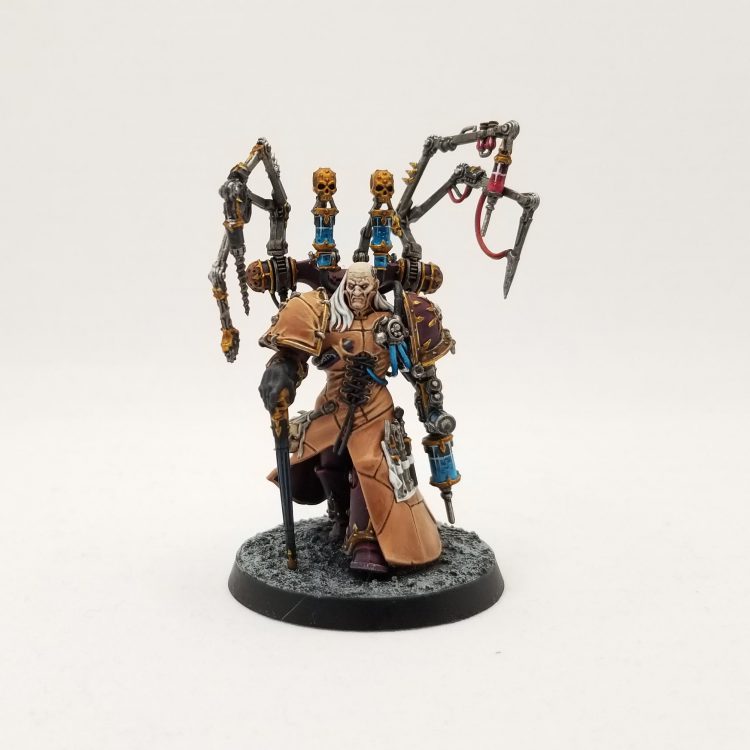
How Important are they in 9th?
The real answer here is “it’s complicated” but to satisfy the demands of the article format I guess it works out to slightly less important.
What Makes a Good Force Multiplier in 9th?
A decent number of factors conspire to make force multiplier units a bit less attractive in 9th. These include:
- Smaller armies mean that you’ve generally got less output to multiply.
- HQ slots, where a lot of these sit, have flipped from being something that it was an upside to fill to being a scarce resource.
- Offensive force multipliers hit the same issue as Ranged Threats where they don’t contribute towards objectives by themselves.
- A lot of force multipliers are psykers, and the game warping power of Abhor the Witch incentivises you to avoid them unless you badly need one.
- They tend to be less durable than the things they’re buffing, and 9th rewards being resilient on the board, meaning you might be better just taking more units instead.
On paper that makes seem like a tough sell. For offensive options, there is a flipside that being able to drop a hail of focused murder on a specific target to steal an objective has gone up in value, meaning there’s still room for debuff casters like Doom, but many buff characters are a harder sell unless they can contribute in other ways such as flexing to a counter-charge Reactive Threat role.
While times look tough for offensive force multipliers, however, there’s a massive growth market for ones that provide defensive or mobility boosts. Every army in 9th needs some sort of plan to get onto some objectives and stay there, so any ability that enables units to participate in these activities suddenly looks very attractive. Implicit in the fact that you’re willing to pay for a force multiplier at all is the idea that they provide a greater boost to whatever capability they’re enhancing than just buying more units would, and anything that provides that kind of boost to your taking and holding activities is really, really helpful in 9th.
Examples
Improved Options
Like, it was clearly fantastic even in 8th, but a character carrying the Ironclot Furnace is proving to be the most consistent theme among Death Guard lists we’ve seen in the new edition, as the ability to stack a bunch of units that are powerful in their own right to 4++/5+++ is extraordinarily tough for a lot of armies to deal with. It’s so good that you could arguably say it’s a consistent theme among Chaos lists as a whole, as a substantial proportion of the most successful ones we’ve seen thus far utilise it.
Weaker Options
The Tau Cadre Fireblade is a great poster child for why these are weaker now. They eat an HQ slot that could (at least in a Farsight detachment) contain a Commander, lists are bringing far fewer Fire Warriors to buff up and they can’t sit safely on a backfield objective all game when you have nothing better to do with them. When HQ slots were a nuisance you needed to fill up, a cheap force multiplier was often a good default choice, but 9th has turned that on its head and these are a big victim.
Board Control
Units in this role provide you with the capability to durably or proactively control or threaten sections of the board.
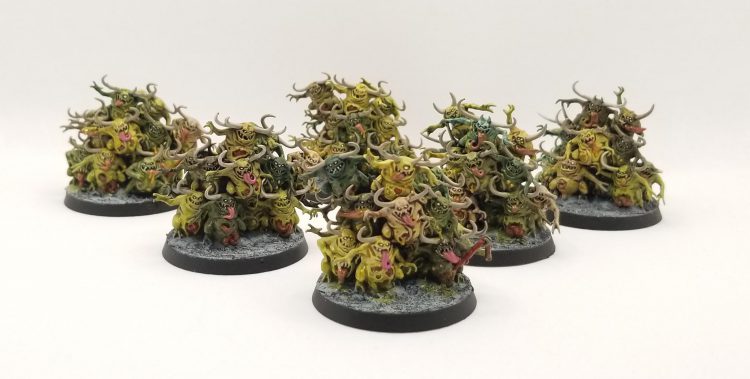
How Important are they in 9th?
Board Control units are significantly more important in 9th.
What Makes a Good Board Control Unit in 9th?
Perhaps unsurprisingly given everything we’ve said thus far about how important holding objectives is, Board Control units are very important in 9th Edition, and a couple of categories of them are seeing massively increased play compared to 8th edition because of it. Durable units that can scout deploy and cheap transports that can hold ObSec troops are proving to be extremely popular in successful lists, as they give you a reliable way to grab some objectives for the first scoring turns while the rest of your forces get into position.
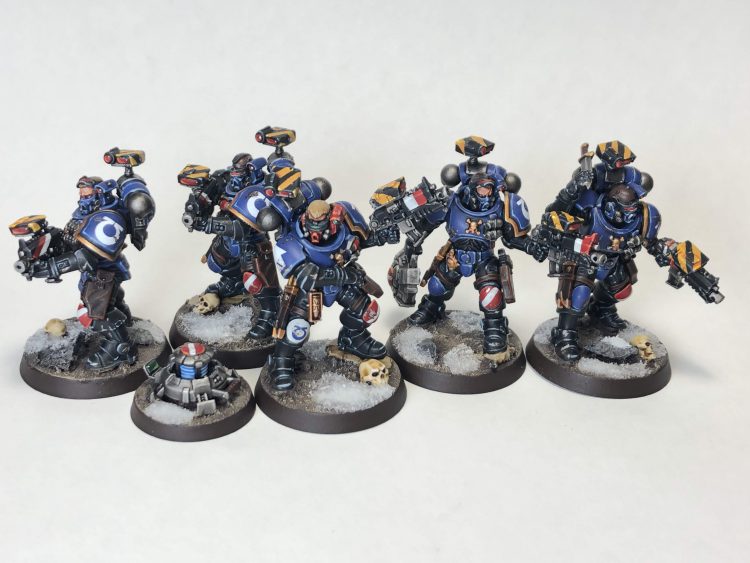
Scout deployment has always been potent, but we’re seeing a swing away from the more fragile options in the slot like Marine scouts towards tougher varieties like Incursors, as you do need a reasonable chance of sticking around for a full turn to really cash in the value. For armies not privileged enough to have good scout options,transports of all flavours are the other big winner of the edition, and choices like Devilfish and Trukks are seeing successful play in vastly greater numbers than in 8th. A vehicle statline with some additional wounds inside tends to be enough of a speedbump that your opponent is choosing between killing it and taking out a threat, putting them on the spot straight away with some tricky decisions.
Not all Board Control options go up in value, mind you. Most notably, horde-based options have a tougher time in the role with the additional restrictions on coherency, reducing the space each unit can occupy, especially if they’re trying to chain back into a big bundle of buff auras (as is often the case). If your plan is to go wide with cheap stuff then multiple small units is the better way to do it at this point.
Examples
Improved Options
Nurglings are one of the breakout hits of 9th. They’ve always been annoying and saw use in successful lists, but now they’re in the big leagues. The combination of being cheap, obsec, easy to hide, tough for the cost, scout deploying and providing a big pile of wounds that isn’t vulnerable to Blast makes them the full 9th Edition package.
Weaker Options
Termagants in Tyranids get the sharp end of the stick here. The best way to use them in 8th tended to be to extrude squads as giant “tendrils” out from a home base where they picked up their defensive buff auras. That plan is shot in 9th, and they’re incredibly vulnerable to pretty much every Blast option under the sun to boot.
Tarpit
These units are incredibly hard to shift, allowing them to make taking control of a section of the board excessively difficult for your opponent.
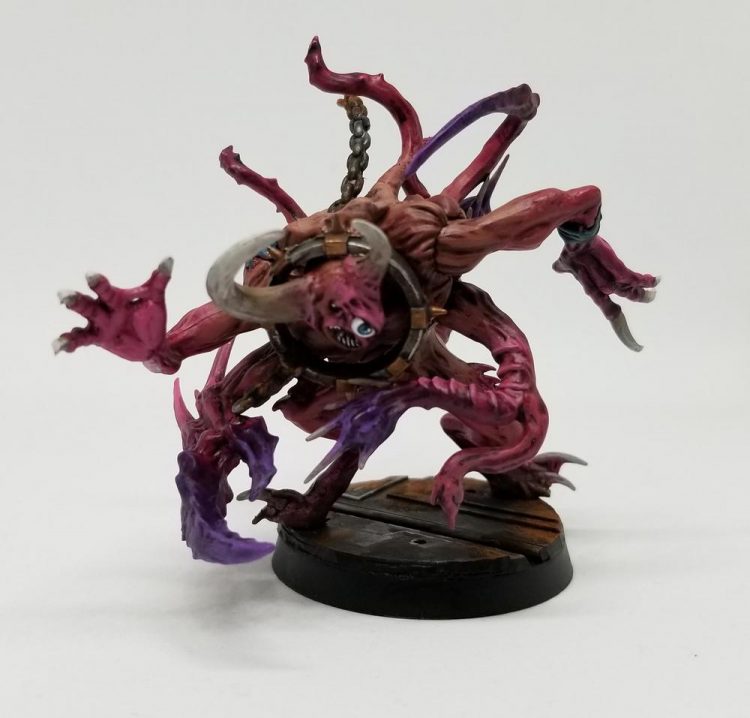
How Important are they in 9th?
Tarpits are significantly more important in 9th.
What Makes a Good Tarpit in 9th?
Pretty much any unit that can lay claim to the title of Tarpit is good in the new edition. It’s always tended to be a fairly exclusive club, given how lethal games can be, and at this point you can be confident that anything with the resilience to be thought of in this way is probably better in 9th than it was in 8th. The best 9th Edition Tarpits are the ones that can thoroughly hold their own in melee as well, as that makes it harder for an opponent to use ObSec units to temporarily take the position off you, but you don’t need to be too picky on this one – it’s been notable that when I’ve been going through lists, quite a few of the armies that narrowly missed a top four position have included more options in this role than you would have seen previously.
The only real units that lose out here are those that were pseudo-tarpits that did the job by having reliable ways to wrap out of deep strike, either by clearing screens or massively boosting charges. Just like for push threats, if that was your plan it probably doesn’t work any more.
Examples
Improved Options
There are so many to choose from here, but Nurgle once again gets some of the tip-top examples, with Contaminated Monstrosity Chaos Spawn and Beasts of Nurgle seeing a tonne of successful play. Both give you access to absurdly cost effective pools of 5+++ wounds, and both can be buffed sufficiently to seriously threaten the enemy in melee when needed.
Weaker Options
Acolyte Hybrids were probably the archetypal wrap-based Tarpit in 8th, and a foundation of how GSC played the game was keeping an opponent locked down under a couple of waves of them. Given the total collapse in this capability, it’s no surprise that the whole faction is struggling.
Screening
Units that provide sufficient coverage and bodies at a cost efficient price that you are happy to sacrifice them to protect your better ones.
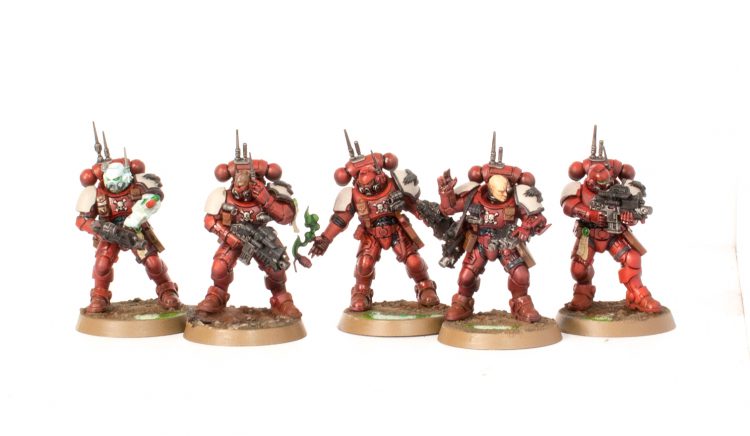
How Important are they in 9th?
Perhaps surprisingly, screening units are proving to be a bit less important in 9th than 8th.
What Makes a Good Screening Unit in 9th?
This one’s honestly a bit of a surprise, as you might initially think that tactical reserves opening up deep strikes to a wider variety of threats would increase the value of screening units. A combination of other factors turn out to be enough of a pull in the opposite direction. Most notably:
- Deep strike wrap armies and smite spam lists being s smaller part of the metagame has reduced the pressure to be able to have a well layered screen.
- Most conventional screens don’t protect characters very well any more.
- Smaller board make it easier to zone off sections with your regular units, but harder to backline behind a screen during deployment.
- Many screens dual purposed as Troop slot fillers, which is less valuable now as we’ll get to.
Couple that with the fact that very cheap units were some of the hardest hit proportionally by the cost chances, and far fewer units where you’d describe screening as their primary role are making it into armies.
Examples
Improved Options
Space Marine Infiltrators are bucking this particular trend both because they dual purpose as scout deploying board control and because their scramblers mean that they completely shut down deep strike charges from a lot of opponents. That’s enough for them to still see use, but they’re a good sign of how high the bar is now.
Weaker Options
Poor grots. Massive point increases mean that you don’t get a unit for less than 50pts, and that price tag really hammers home that they just don’t do very much, and at this point you probably only run them if you’re absolutely desperate to shave 30pts off a troop choice or use Grot Shields.
Backfield
Units that are especially well suited to sitting in your own deployment zone, through being easy to hide, difficult to remove at range, or able to contribute damage output while in this position.
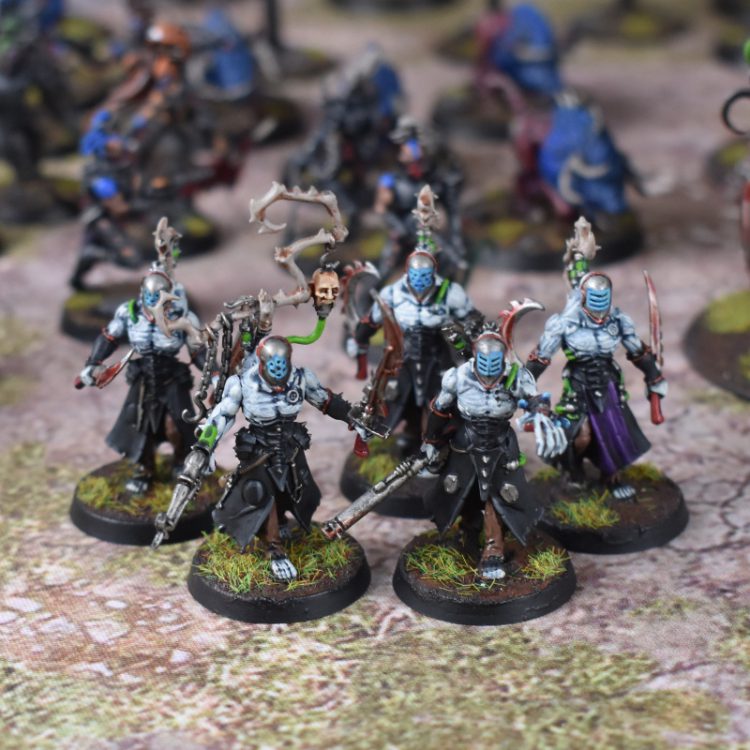
How Important are they in 9th?
Backfield units feel about the same in terms of importance.
What Makes a Good Backfield Unit in 9th?
In 9th’s objective focused gameplay you very much do want something that can just comfortably sit on a home objective and rack up points all game. Many of the objective maps feature at least one in the players deployment zones, and keeping hold of that is vital to a healthy stream of primary scoring.
The main challenge here is that some of the things you used to do this with aren’t as good any more. Most notably, you can’t just keep a CHARACTER miles back from your front line with impunity all game, so you need to look elsewhere for your options here. You do, ideally, want to maintain that element of being non-trivial to remove at range, as an opponent blowing a weaker unit off the board at the wrong time can massively swing the points you earn for a given turn. If you can you probably want to be dual-purposing some durable ranged threats like the aforementioned Plagueburst Crawlers in here, but if nothing like that is available to you it’s worth contemplating paying a bit more than you would have in 9th for something with a bit of heft.
Examples
Improved Options
Drukhari Wracks have always been strong objective sitters, but they’re seeing even more play then ever in Drukhari lists. Especially as Prophets of Flesh, their T4 and invuln means they take actual shooting to put down, and even when your opponent commits to trying to kill them can sometimes luck through with a good run of rolls. I’m sure Kabalites taking one of the most brutal point hits in the game doesn’t hurt, but even absent that I think you’d have seen these mixed into lists for this purpose.
Weaker Options
Staying with Aeldari, Death Jesters lose their ability to pose dramatically on an objective all game while squeezing off the occasional shot. They got some great options to give them other roles in the Harlequin Psychic Awakening, so they’re far from useless, but can’t fall back to this so easily when they have nothing else to do.
ObSec
Units with the objective secured rule, allowing them to claim objectives against a greater number of enemies.

How Important are they in 9th?
ObSec units are slightly less valuable in 9th Edition.
What Makes a Good ObSec Unit in 9th?
Objective Secured is potentially a very powerful mechanic, and still has plenty of uses, but the way that scoring works necessarily makes it less valuable than it was in 8th. Using a sacrificial ObSec unit can deny your opponent primary points, but if they aren’t durable enough to stick around till your next turn they won’t score you any either. They retain a bit more value in secondary scoring, as quite a few of both the core secondaries and the mission-specific ones are scored at the end of the turn. In addition, they can be very valuable when you mount them up in transports, as if an opponent comes and kills the transport in the fight phase then your ObSec models can pop out on an objective, holding on to it. The Emergency Disembarkation stratagem means that it’s extremely difficult for your opponent to prevent this from happening once they commit to the kill, so dropping a few squads to open up points for transports is a good way to keep some of this capability in your lists.
Really though, the premium ObSec options in 9th are the ones that bend the rules a bit – units that have no real business having the ObSec ability that can gain it through stratagems or special abilities. These tend to be faster, deadlier or tougher than you’d normally get out of an ObSec unit, and anything that helps you flip or reliably secure a key objective at the right moment is premium in 9th.
Examples
Improved Options
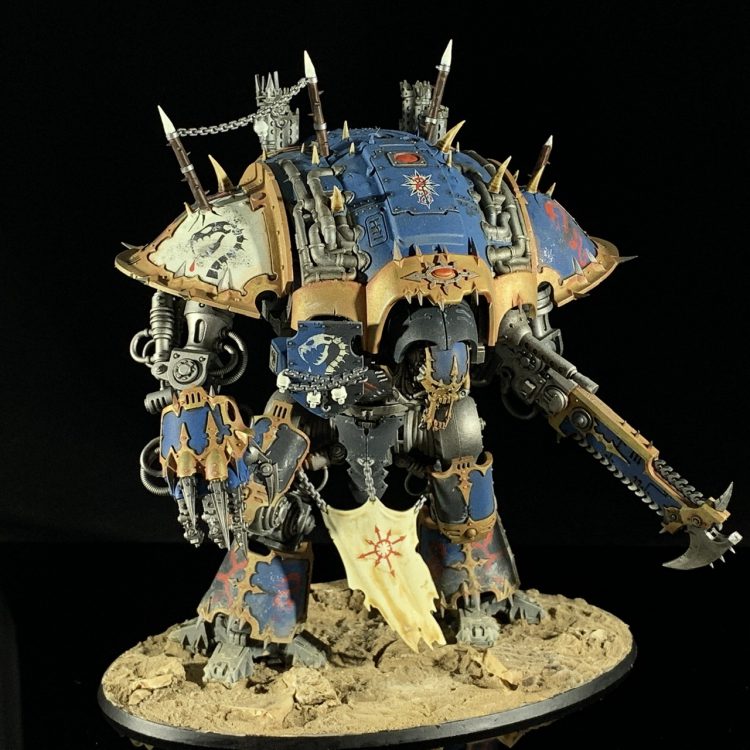
Two warlord traits rather than actual units stand out here – Infernal Quest in Chaos Knights, letting a single Knight gain ObSec and count as 10 models when contested to boot, and Never Give Up in Salamanders, letting you designate one nearby unit a turn to gain the ability. The former should be a near mandatory consideration for Chaos Knight lists, while the latter has seen use in some of the successful Salamander builds we’ve been seeing.
Weaker Options
Your basic foot-slogging guard Infantry Squad goes down in value, as while Move, Move, Move-ing around the board is still OK, you can’t win games by going second and gradually rationing them out onfo the objectives any more.
Harassment
Units that threaten to impede or assail enemy positions away from the main body of their force if unchecked.

How Important are they in 9th?
Harassment units are slightly more important in 9th Edition.
What Makes a Harassment Unit in 9th?
For a lot of the same reasons as with Reactive Threats, 9th’s missions are quite favourable to Harassment units. You ideally want them to be:
- Cheap
- Naturally Deep Strike
- Can pick off stragglers in melee.
- Have the INFANTRY keyword.
The last one is notably more important in 9th Edition, as it’s required to carry out quite a few of the Actions that underpin, and being able to do these is a very handy backup plan for these units, ensuring they’re rarely wasted. You generally don’t want to go too deep on them, as they’re generally a bit less able to go after tougher stuff than full blown Reactive Threats, but a few units of cheap Deep Strikers is a great addition to lists.
Examples
Improved Options
Ork Kommandos are huge winners in 9th. They’re dirt cheap, but if you pay for the Nob power claw they’ll do some legitimate damage with good rolls, and you can either boost their charge or give them ObSec with the appropriate Clan Kultur.
Weaker Options
Honestly? I had a good think and couldn’t really come up with one. Most units that were good in this role remain so, and some units that can fill it are better than they were before.
Slot Fillers
A unit included at least partially to fill a complete detachment, or allow inclusion of other units in a few unusual cases.
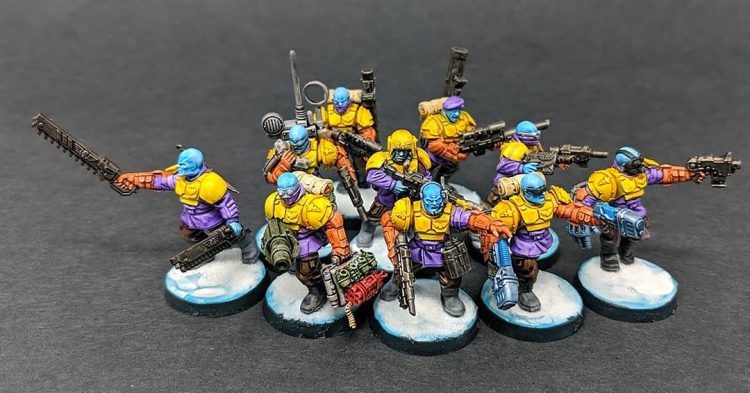
How Important are they in 9th?
Much Less important.
What Makes a Good Slot Filler in 9th?
The change to the detachment system, meaning that you’re no longer massively rewarded for squeezing two Battalions into a list, absolutely craters the importance of Slot Fillers. You do still sometimes need to take units to fill slots, but often only as many as it takes to unlock a battalion for the extra character slot, and armies that can afford to run light on CP in the early game are often not even doing that, preferring to pay the extra cost to bring Spearheads and Outriders as needed. This is one of the roles that’s on my list for potentially just removing all together in the final 9th edition version of the article, as once you layer higher costs on top of the other factors you’re generally desperate to take stuff in your Troop slots that can do productive things on the battlefield rather than blowing points just to earn CP.
Examples
Improved Options
With that in mind, Custodian Guard are Slot Filler winners largely because units of three of them can do plenty of other handy stuff on a 9th Edition table.
Weaker Options
You’d have thought this one might be too abstract to pick a biggest loser but you’d be wrong – Genestealer Cult Brood Brothers take that crown. Because of how CP-hungry GSC are on the table, they simply can’t afford to spend lots to take multiple detachments, so where previously Brood Brothers were a phenomenal package that combined earning you CP with providing board control that didn’t care about whatever bizarre mixed cult shenanigans you were doing on the characters, they now find themselves largely irrelevant.
Counters
A unit included because it provides the capability to disable your opponent’s key abilities in certain circumstances, or remove their ability to harm some of your other units.
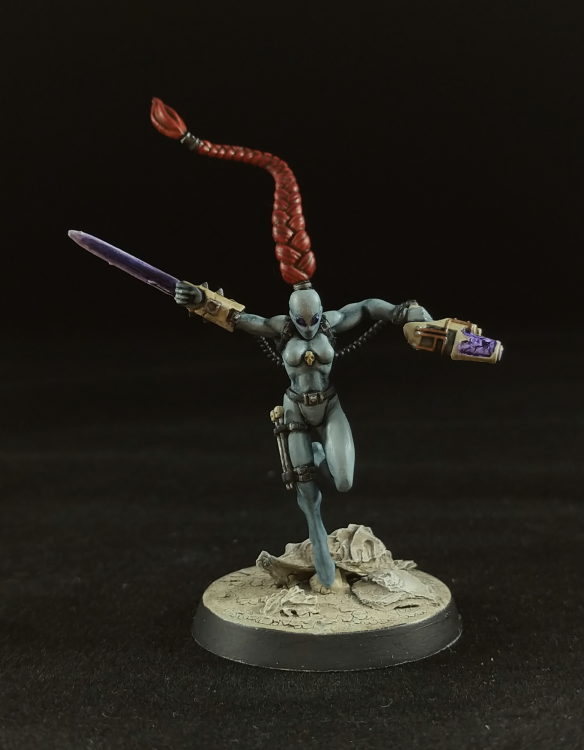
How Important are they in 9th?
Counters are quite a bit less important in 9th Edition
What Makes a Good Counter in 9th?
Three factors make Counters much harder to justify in 9th:
- Army construction changes make any counter option that requires a full detachment vastly less cost-efficient to squeeze into an army.
- Fixed relic and warlord trait picks mean you can’t bring a character designed to flexibly pick from a wide variety of options for matchups.
- Smaller armies means you can less afford dead weight.
Realistically, the best Counters in 9th are either things that still manage to be flexible despite the tightened rules or units that are good on their base rate and happen to be great in some matchups. This isn’t a very deep pool, and you’ll probably know if you have access to one.
Examples
Improved Options
Imperial Assassins…in theory. As it stands their fancy new Shadow Assignment stratagem doesn’t actually work properly in the new pre-game procedure, but assuming it’s meant to let you swap game to game (which many TOs are ruling) it’s good – you get to take your initial Assassin without any CP cost, and have access to a wider pool on the fly.
Weaker Options#
Black Heart add-on detachments bringing Agents of Vect. In pure Drukhari lists that can Raiding Force three patrols Vect is still good, but anywhere else it’s much weaker. The lowest price you pay to add it to your list is 110pts and 2CP, and spending that on units that are frankly bad without further points just to unlock the opportunity to spend 4CP on a stratagem is a pretty steep sell.
Takeaways
Taking all of the above together, there are some definite trends among the units that seem to be most attractive in various roles:
- Quality over quantity. Much more of a focus on units that can do a job well over throwing lots of chaff at a problem.
- Polarised threats. You seem to either want something durable that can squeeze out value over time or hyper-lethal reactive threats that can surgically and reliably delete something.
- Flexibility is more valuable than ever. With smaller armies and more constraints on your list construction, units that can operate in multiple roles as the situation dictate are gold.
To be honest, that all sounds great to me, and I’m certainly finding that building lists in 9th is more challenging, interesting and fun than it was in 8th. I do also feel like many of the effects here aren’t accidental, which suggest that while we have some ongoing concerns about the value of the first turn, the 9th Edition designers have done a good job of reshaping the priorities of list building towards what is, frankly, the enjoyable stuff. Let’s hope that holds up as books start to land!
Wrap Up
As made abundantly clear at the start, these are still early impressions of how play is shaking out in a new edition, and are subject to a complete revision once the metagame has had more of a chance to grow and evolve, but hopefully the impressions ring true. If you have any thoughts or comments please do send them to contact@goonhammer.com, otherwise I’ll see you later in the week for more list reviews!
